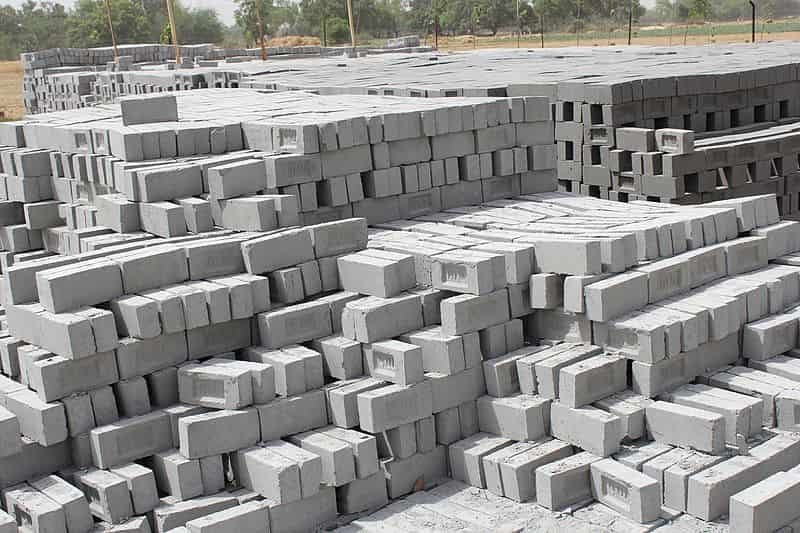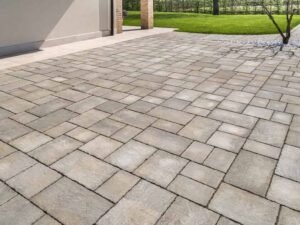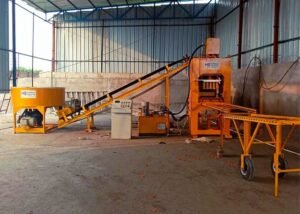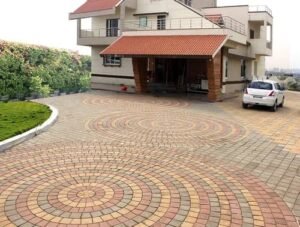Fly ash bricks are becoming increasingly popular as a more environmentally-friendly alternative to traditional clay bricks. Made from fly ash, a byproduct of coal combustion, these bricks can help reduce your carbon footprint in a number of ways.
In this article, we will discuss how fly ash bricks can help reduce your carbon footprint, what they are made of, and why they are a more sustainable option.
What are Fly Ash Bricks?
Fly ash is a fine powder that is created when coal is burned in power plants. It is collected from the flue gas through a series of filters, and then used as a raw material in the production of fly ash bricks. These bricks are made by mixing fly ash with a small amount of cement and water, and then compressing the mixture in a mold to form the desired shape.
Fly ash bricks are much lighter than traditional clay bricks, making them easier to handle and transport. They are also stronger and more durable, with a higher compressive strength than clay bricks. This makes them ideal for use in construction projects, particularly in areas where earthquakes are common.
How Can Fly Ash Bricks Help Reduce Your Carbon Footprint?
There are several ways in which fly ash bricks can help reduce your carbon footprint:
They use a waste product
One of the key benefits of fly ash bricks is that they use a waste product that would otherwise be disposed of in landfills. By using fly ash as a raw material, we can reduce the amount of waste that is produced and prevent it from polluting our environment.
They require less energy to produce
Fly ash bricks require less energy to produce than traditional clay bricks. This is because they are made at lower temperatures and do not need to be fired in a kiln. This means that less fuel is required to produce them, resulting in lower greenhouse gas emissions.
They are more energy-efficient
Because fly ash bricks are stronger and more durable than clay bricks, they can help improve the energy efficiency of buildings. This is because they have a higher thermal mass, which means they can absorb and release heat more slowly than clay bricks. This can help reduce the amount of energy needed to heat and cool a building, leading to lower energy bills and fewer greenhouse gas emissions.
They can be recycled
Fly ash bricks can be recycled at the end of their useful life, further reducing their environmental impact. They can be crushed and used as a raw material in the production of new fly ash bricks, or as a replacement for cement in concrete.
Why are Fly Ash Bricks a More Sustainable Option?
In addition to the environmental benefits listed above, fly ash bricks are also a more sustainable option for several reasons:
They are cheaper
Fly ash bricks are cheaper to produce than traditional clay bricks, making them a more cost-effective option for construction projects. This can help reduce the overall cost of a building project and make it more accessible to a wider range of people.
They are more durable
Fly ash bricks are stronger and more durable than clay bricks, with a higher compressive strength. This means they can last longer and require less maintenance over their lifespan. This can help reduce the amount of waste generated by construction projects and make them more sustainable in the long-term.
They can help reduce the urban heat island effect
The urban heat island effect is a phenomenon where urban areas are significantly warmer than surrounding rural areas due to the amount of concrete and asphalt that absorbs and retains heat. Fly ash bricks can help reduce this effect by absorbing and releasing heat more slowly than traditional clay bricks, helping to regulate the temperature in urban areas.
Conclusion
Fly ash bricks are a more sustainable and environmentally-friendly alternative to traditional clay bricks. They use a waste product, require less energy to produce, are more energy-efficient, can be recycled, and are cheaper and more durable. By choosing fly ash bricks for your construction projects, you can reduce your carbon footprint and help protect the environment. As the demand for sustainable building materials increases, fly ash bricks are becoming a popular choice for builders and developers who want to create more sustainable and cost-effective buildings. By embracing these innovative materials, we can all play a part in creating a more sustainable future for ourselves and for generations to come.




